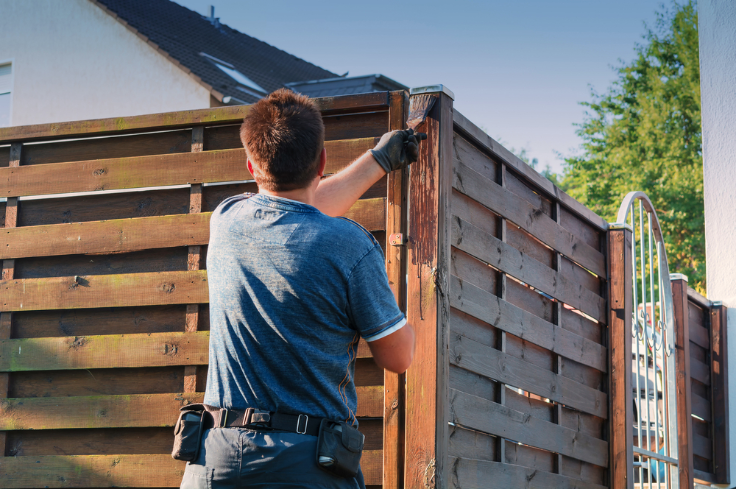What I Should Know When Building a Fence on My Property
Before you start building a fence on your property, remember the saying, ‘Good fences make good neighbors.’ Understanding your local zoning regulations is crucial, but there’s more to it than that.
From property line verification to selecting the right materials, there are key factors to consider. Keep in mind that the design and maintenance of your fence can impact not just your property’s aesthetics but also its functionality and longevity.
So, as you embark on this project, be prepared to navigate these important aspects to ensure your fence serves its purpose effectively.
Zoning Regulations
When planning to build a fence on your property, you must first familiarize yourself with the local zoning regulations. Zoning regulations dictate the rules and restrictions regarding the height, location, and materials allowed for fences in your area. These regulations are put in place to ensure that the fences built align with the aesthetics and safety standards of the neighborhood.
Before proceeding with your fence project, contact your local zoning office or visit their website to obtain a copy of the regulations. It’s crucial to review these guidelines carefully to avoid any potential violations that could result in fines or the need to modify or remove your fence.
Some common aspects covered in zoning regulations include the maximum height of the fence, its distance from the property line, and any design restrictions that may apply. By adhering to these regulations from the outset, you can save yourself time, money, and potential legal issues down the line.
Property Line Verification
To ensure accuracy when building your fence, it’s crucial to verify the location of your property line. This step is essential to prevent any legal disputes with neighbors and ensure that your fence is constructed entirely within your property boundaries. Here are some key points to consider when verifying your property line:
- Review Your Property Deed: Check your property deed for any information regarding the property lines. The deed may contain a legal description of your property boundaries.
- Hire a Professional Surveyor: Consider hiring a licensed surveyor to accurately determine the boundaries of your property. Surveyors use specialized equipment to precisely measure and mark the property lines.
- Check for Boundary Markers: Look for existing boundary markers such as metal pins or stakes that indicate the property lines. These markers may have been placed by previous surveyors.
- Consult with Neighbors: Communicate with your neighbors about the property lines to ensure mutual understanding and prevent any conflicts in the future. It’s beneficial to have a friendly discussion and potentially share the cost of a professional survey if needed.
Material Selection
To ensure the durability and aesthetics of your fence, selecting the appropriate materials is crucial. When choosing the material for your fence, consider factors such as maintenance requirements, weather resistance, and overall cost.
Wood is a popular choice for its classic look, but it requires regular maintenance to prevent rotting and warping. Vinyl, on the other hand, is low maintenance and durable but can be more costly upfront. Metal fences, like aluminum or steel, offer strength and security, but they may not provide as much privacy as other materials.
If you prioritize eco-friendliness, consider composite materials that are made from a mix of recycled wood and plastic. These materials mimic the look of wood but require less maintenance and are resistant to rot and insects.
Before making a decision, assess your priorities regarding appearance, maintenance, and budget to choose the material that best suits your needs and enhances the overall value of your property.
Design Considerations
Considering the layout and aesthetics of your property, the design of your fence plays a crucial role in enhancing both the visual appeal and functionality of your outdoor space. When planning the design of your fence, keep the following considerations in mind:
- Purpose: Determine the primary purpose of your fence – whether it’s for privacy, security, or aesthetics. This will guide the overall design and material choices.
- Style: Choose a fence style that complements the architecture of your home and the overall landscape design. Whether you prefer a modern look, a traditional feel, or something in between, the style should blend harmoniously with your property.
- Height and Layout: Consider the desired height of the fence for its intended purpose. Additionally, plan the layout carefully to define boundaries and create visual interest.
- Gate Placement: Strategically place gates for convenient access to different areas of your property. Ensure they’re functional, secure, and match the overall design of the fence.
Maintenance Tips
Maintaining your fence regularly is essential to prolong its lifespan and keep it looking its best. Inspect the fence at least once a year for any signs of damage, such as loose boards, rust, or rot. Addressing these issues promptly can prevent them from worsening and save you money in the long run.
Clean your fence periodically to remove dirt, mold, and mildew, which can deteriorate the materials over time. Use a mild detergent and a soft brush to scrub the surface gently. Additionally, consider applying a fresh coat of paint or sealant every few years to protect the wood or metal from the elements.
Trim any vegetation that may be growing near the fence to prevent it from causing damage or creating a pathway for pests. By following these maintenance tips, you can ensure that your fence remains sturdy, attractive, and functional for years to come.
Frequently Asked Questions
Can I Build a Fence That Is Taller Than the Regulations Allow if I Get My Neighbor’s Permission?
You can typically build a taller fence with your neighbor’s permission even if it exceeds regulations. Ensure you have written consent for proof. However, always verify local laws first to avoid potential issues in the future.
Are There Any Restrictions on the Color or Style of Fence I Can Build on My Property?
When building a fence on your property, it’s essential to check local regulations regarding color and style restrictions. Some areas may have specific guidelines in place to ensure uniformity or prevent certain materials from being used.
Do I Need a Permit to Build a Fence Around a Swimming Pool on My Property?
You need a permit to build a fence around a swimming pool on your property. Make sure to check local regulations for specific requirements. Failure to obtain a permit may result in penalties or the need to remove the fence.
Are There Any Additional Costs or Fees Associated With Building a Fence on My Property That I Should Be Aware Of?
When building a fence on your property, be aware of potential additional costs like permits, materials, labor, and property line surveys. These expenses can vary based on fence type, height, and local regulations.
Can I Install Security Cameras or Lighting on My Fence Without Violating Any Regulations or Laws?
Yes, you can install security cameras or lighting on your fence without violating regulations. Make sure the installation complies with local laws. Consider the camera’s field of view and the lighting’s intensity to avoid potential privacy concerns.
Conclusion
Now that you know the importance of zoning regulations, property line verification, material selection, design considerations, and maintenance tips when building a fence on your property, you can confidently start your project.
Remember to always follow local guidelines, double-check property boundaries, choose the right materials, design a fence that suits your needs, and maintain it regularly to ensure its longevity and functionality.
Happy building!

